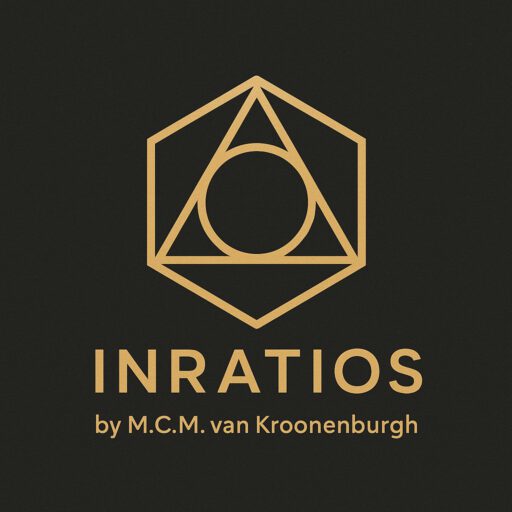Measuring Without the Mess
A digital geometric paradigm built on proportion,not approximation
They say that to measure is to understand.
And in many ways, that’s true.
But digital systems don’t always need more numbers,
sometimes they need a more stable way to describe.
In classical geometry, we often rely on constants like π or √.
These values express structured relationships between forms.
But they also introduce complexity,
because they’re irrational.
Take √2:
It’s an irrational number, yes,
but it’s also a fundamental result of a basic mathematical operation.
Its definition is exact.
Its meaning is clear.
You square it, and you get 2.
But π is different.
It’s not derived from an equation.
It’s inferred from curves.
We can use it, approximate it, work with it—
but we never fully define it.
That’s rarely a problem on paper.
But in digital environments, where precision meets limitation,.
it raises a question:
“Do we always need to measure with infinite numbers,
or can we describe with finite relationships instead?“
That’s where the Geometric Ratio Model (GRM) comes in.
Not as a replacement—
but as a complement.
A way of anchoring geometry in fixed proportions,
without abandoning the forms we know.
Seeing instead of calculating
GRM doesn’t start with equations.
It starts with relationships.
Instead of asking how long is this side? or what’s the value of this curve?,
it asks:
How do shapes relate—within a structure that doesn’t change?
Take a square.
Its perimeter is stable.
Its surface is known.
Now place a circle inside it—one that touches all four sides.
From that moment on, every measurement becomes relative.
The perimeter of the circle? Always 0.7854 of the square’s.
The radius? 0.1250 of the square’s total boundary.
The area? Also fixed—0.7854 of the square’s surface.
And when we move from area to volume,
this logic continues—without needing to displace water or simulate mass.
Where Archimedes measured volume by submerging solids,
GRM defines it through form:
a sphere within a cube always holds 0.5236 of its total volume.
No fluid required.
Just structure.
Just proportion.
While Archimedes worked through interaction with matter,
GRM offers a purely structural, digital alternative—designed for systems, not fluids.
In the digital world, physical principles don’t disappear,
but they do get translated.
What was once measured through physical interaction
is now modeled through proportion and structure.
This doesn’t replace classical physics,
it introduces a digital geometric paradigm:
a way of measuring based on fixed ratios,
where geometry becomes visual, scalable, and system-ready.
And when we talk about volume, not just in physics, but in architecture, biology, or simulation,
having a structural way to describe it unlocks new tools for design, for analysis, and for AI.
We’ll return to this soon.
A framework built for clarity
In classical geometry, we often start with what we can’t see,
an angle, a value, a ratio we have to calculate.
But GRM begins with what is visible.
It turns geometry into a system of relationships that can be measured, compared, and reused,
without rounding, translating, or estimating.
That doesn’t make it better.
It makes it complementary.
And in a world increasingly defined by systems,
digital design, AI modeling, medical imaging, scalable architecture,
that matters.
It means geometry can speak a language machines understand.
A language of ratios.
Of clarity.
Of simplicity without loss of depth.
What’s next: exploring the pi question
With this fourth blog, we close the “Foundations Series of GRM“,
a set of reflections on proportion, visual logic, structure, and the boundaries of classical constants.
Tomorrow we begin our first in-depth theme week.
A journey across seven days,
starting at the root of the question that launched this model:
Why would we need an alternative to pi?
What made us ask?
What would it solve?
I’ll take you through the reasoning, the friction, the curiosity,
and why GRM was never about rejecting classical geometry,
but about completing what was never fully defined.

